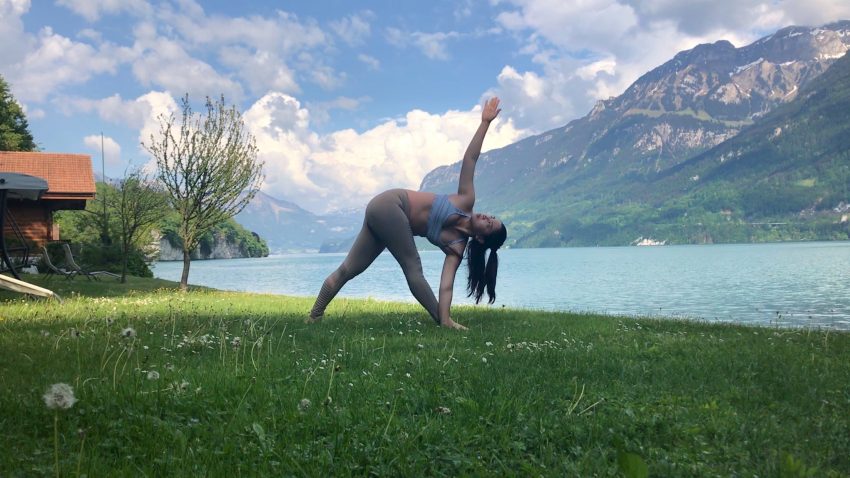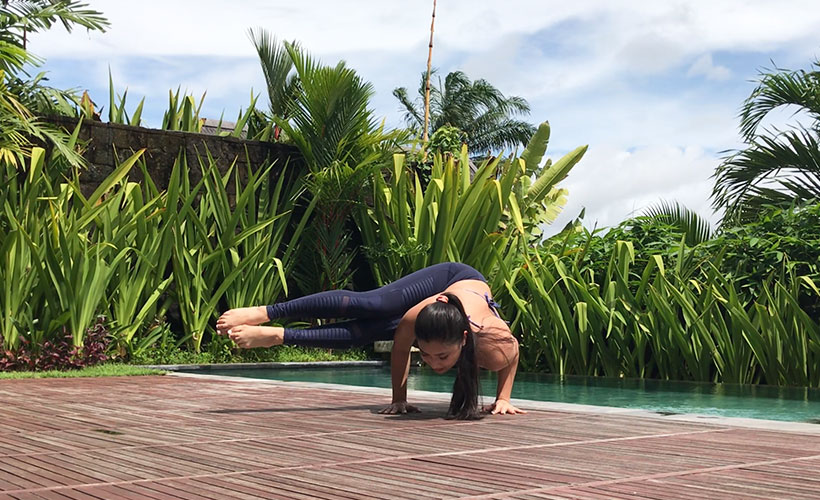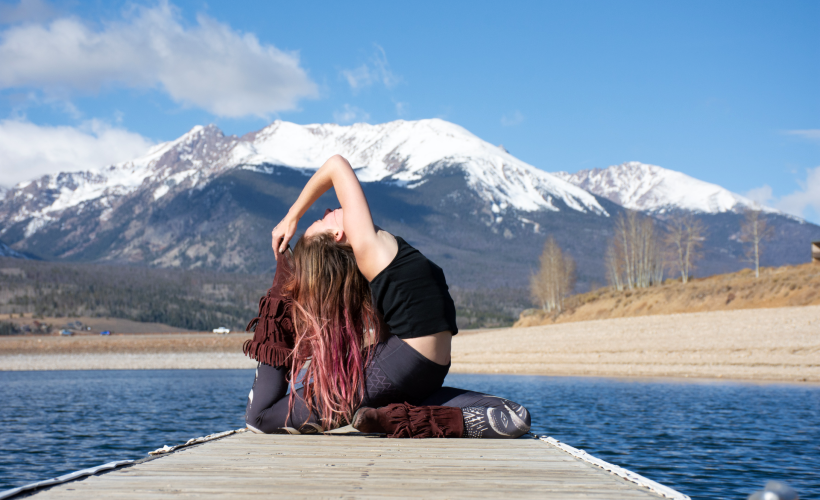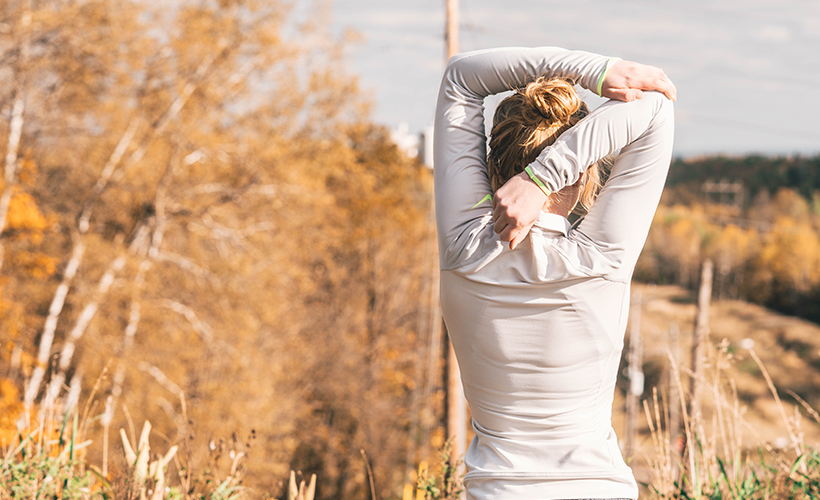
With the International Day of Yoga coming up on 21 June, being Zafigo’s go-to (amateur) yogi, I was tasked to write a feature encompassing yoga and travel. Now, I can honestly tell you that I was absolutely stumped. For close to two weeks, I was racking my brain, trying to come up with a topic that hasn’t already been done to death – Beautiful Places To Practice Yoga, Most Stunning Yoga Retreats, Where In The World To Do Your Teacher’s Training. No, no, and no.
And then it dawned on me – why not go back to the fundamental lessons your practice has taught you? The last thing I wanted was to write a meaningless piece for a day that so many people hold close to their heart.
At first glance, most would think that yoga is about handstands, funky arm balances, or contortionist-level flexibility, but at the risk of sounding cliché, it’s really much more than that. The incredible poses you see make up just one of the eight limbs of yoga – Asana (pose or posture). Yoga is really a way of life – with teachings that should be incorporated into every aspect of living. Yes, that includes while you travel too. So, on this International Day of Yoga, here are eight ways to travel the world while practicing yoga, based on the eight limbs.

1. Take a breather
Controlled breathing can be a powerful tool for any stressed out wanderer. The rush of getting past immigration, legging it for your plane, and anxiously waiting for your luggage can be stressful. Every now and then, remember your Pranayama (breath) and worth with it. The air we breathe is vital to our life force, thus breath control is considered to be the expansion of this vital energy. Taking long, deep, conscious breaths in and out will easily and quickly calm the senses.
2. Live a little
While there are five lessons that fall under the Niyama (personal observances) umbrella, when travelling, the two most important ones are Tapas (zeal for life or discipline) and Saucha (cleanliness).
When it comes to Tapas, we’re not referring to the food. One of the best ways to exercise discipline and discover a destination is by hiking, cycling, or even kite surfing. This will keep your body healthy and simultaneously allow you to explore where you’re at in whole new ways. So keep up that zeal and stay open to trying something new.
As for Saucha, this cleanliness applies to the purity of mind, speech, and body. Be mindful of your words when speaking to locals, don’t be condescending, don’t look down on others just because they’re different from you. When it comes to your body, be mindful of what you put into and onto your body – the last thing you want is to be ill on holiday.

3. Have some self-awareness
In other words, don’t be a jerk. One of the most important limbs of yoga is Yama, that can be translated to ethical considerations or social ethics. Yama also has five teachings under its umbrella, but when it comes to traversing the globe, Ahimsa (non-harming) and Satya (truth-telling) come into play.
A simple way to practice Ahimsa during your travels is to be mindful of the tourist attractions you support. Do they exploit the locals or really give back to the community? Are they a legit animal sanctuary that’s against cruelty? Sometimes, it may be difficult to discern how ethical an establishment is, but it’s imperative that we make the effort to do our research. Another way to practice Ahimsa is to also be kind to yourself. If you haven’t been working out or sticking to your diet while on holiday, remember that you’re there to enjoy too and needn’t feel bad about it.
Satya, on the other hand, is acknowledging your own internal truths and intentions. For instance, when visiting an orphanage or doing volunteer work in an impoverished nation, ask yourself why you’re really there. Is it really to help or is it actually just for the ‘gram? Sometimes, you’ve got to check yourself.
4. Get a move on
Our minds and bodies wander into the positions they’re in. Oftentimes, the body remains still while the mind wanders (overthinkers, I’m looking at you). Asana gives our body and mind control over this wandering awareness. Keeping your mind and body in check while on the road is easy. No, really. All the space you need is the size of a yoga mat. So whether or checked-in at a hostel or stuck on a long-haul flight, there’s always a means to get a move on.

5. Keep your focus
Before you meditate, concentrate. Dharana (concentration) can also mean holding steady, and ideally, one should be in a state of Dharana throughout the day. In everyday life, practicing Dharana allows you to keep your focus on the task at hand. While travelling, you can apply the same principle to really being in the moment, focusing on all the things around you and appreciating the details. When you do this consciously, you’ll find that you won’t be zipping through a museum in 20 minutes, but will take the time to understand things better.

In a time when the entire world is shut down and travel is prohibited due to the deadly disease that is COVID-19, I bought a flight ticket to Los Angeles, in the good ol’ USA. – I Bought A Flight Ticket To Travel During The COVID-19 Pandemic
6. Take a moment
Not all forms of Dhyana (meditation) require you to sit in a corner cross-legged and dead to the world. You can be taking a stroll down the beaches of Zanzibar or enjoying a sunrise walk along Fort Galle’s ramparts and still be in a meditative state. There are other forms of meditating too – chanting, gazing, breathing, and so on. Meditation has been shown to have numerous benefits – enhanced sleep, improved emotional health, anxiety control, reduced stress – that are perfect for any avid traveller!

7. Create inner peace
The next limb of yoga is Pratyahara (turning inward or sense withdrawal). This article puts it perfectly, saying that any action that “takes your focus away from external impressions and creates peaceful and positive impressions is Pratyahara.” One way you can take control of your senses while travelling is by detoxing from social media, giving you a chance to really be in the moment. By all means, take all the photos you want, but leave the scrolling, editing, and uploading for later.
Alternatively, turning inwards also allows you to let go of the little things. A lot of the time, things that are external are beyond our control, so if you’ve got a delayed flight or perhaps a reservation that got mixed-up, try not to sweat the small stuff. Internalise it, then let it go. Not the easiest thing to do, but you’ll come out much happier.
8. Achieving enlightenment
Samadhi can be alluded to oneness with all living things, absolute bliss, enlightenment, peace, or super consciousness. Clearly an abstract idea, let’s break it down a little more. The Sanskrit word sama means equal/even, while adhi means to adhere to. Put them together and what you’ve got is the unification of all aspects of our being: physical, spiritual, emotional, and mental.
But what’s enlightenment got to do with travelling, you ask? Well, you can apply the principles of achieving Samadhi to the choices you make when travelling. Do something to feed your mind by signing up for a cooking class or museum tour to learn more about the local culture. Feed your soul by doing volunteer work abroad. The idea is that enlightenment can be achieved once all aspects of life are unified through the eight-fold practice that is yoga. Though honestly, travelling aside, it’s really something we should all try to attain. Namaste.
*All photos courtesy of the author



